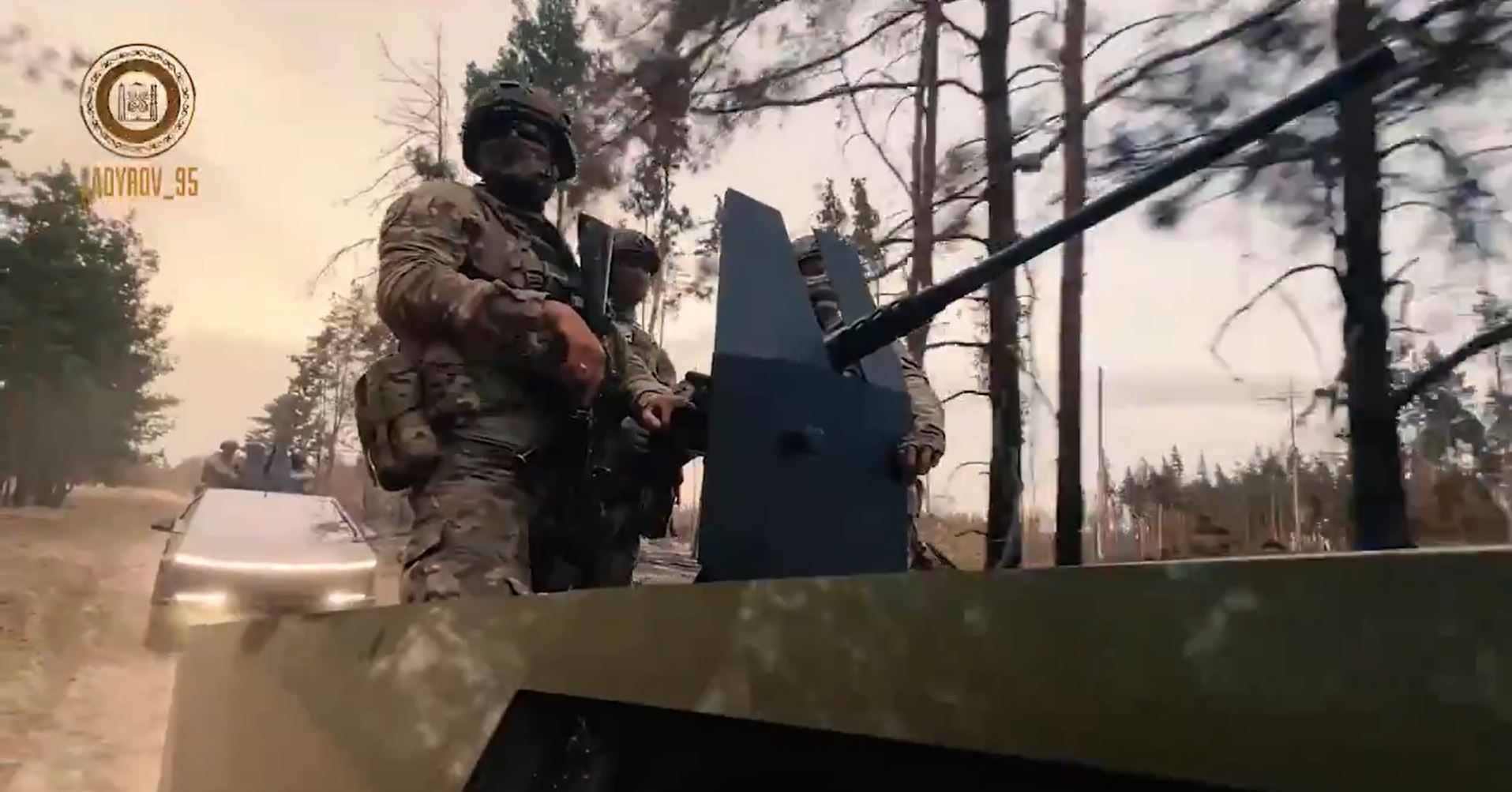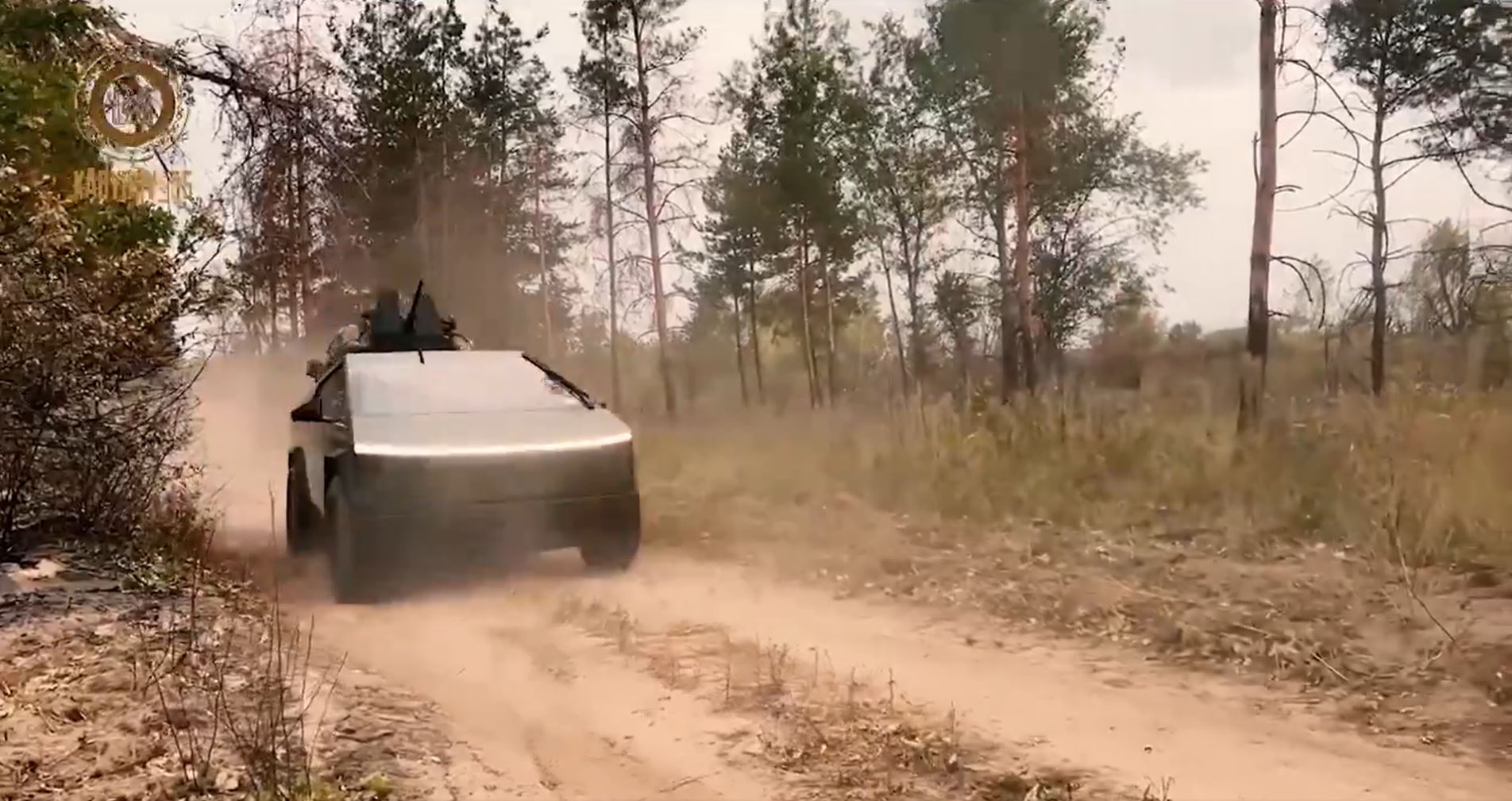The Cybertruck, Tesla’s futuristic electric pickup truck, has captured global attention with its distinctive design and impressive capabilities. However, its popularity has extended beyond peaceful enthusiasts, attracting controversial figures from around the world. One such figure is Ramzan Kadyrov, the controversial leader of Chechnya.
Kadyrov’s recent acquisition of two Cybertrucks, equipped with mounted machine guns, has raised significant concerns. The video showcasing armed men standing in the truck beds sends a clear message of military might, suggesting a potential misuse of these electric vehicles in a region known for conflict. This association with Kadyrov, a leader who has been accused of human rights abuses, further complicates the Cybertruck’s reputation.

While Tesla has publicly distanced itself from Kadyrov and his claims of receiving a Cybertruck as a gift, the presence of these vehicles in Chechnya raises questions about the company’s oversight and the potential implications of its products falling into the wrong hands. The Cybertruck, once celebrated as a symbol of innovation and sustainability, has now become embroiled in a complex geopolitical narrative.
The recent revealing of two Cybertrucks by Chechen leader Ramzan Kadyrov, complete with olive green wraps and claims of combat readiness, has raised eyebrows and sparked speculation. While the idea of electrifying military vehicles is commendable, the practicality of deploying these high-tech pickups in a conflict zone remains questionable.
With limited charging infrastructure and potential maintenance challenges, the Cybertrucks face significant hurdles. The long charging times, especially in combat situations, could make them vulnerable targets. Additionally, the lack of NACS-equipped chargers in Europe raises further concerns about their suitability for the region.
The video showcasing the Cybertrucks alongside conventional Toyota Hilux units hints at the potential need for backup vehicles capable of towing or transporting the electric pickups in case of breakdowns or damage. However, the specific details of these arrangements remain unclear.
Kadyrov’s decision to acquire and deploy Cybertrucks in the conflict with Ukraine raises questions about his motivations. While the dictator may be a genuine Tesla enthusiast, the practical benefits of these vehicles in combat are debatable. The high cost and potential risks associated with using them in a war zone could be seen as a questionable investment.

The entire episode has also fueled speculation about potential ulterior motives. Some suggest that Kadyrov’s actions could be a deliberate attempt to discredit Tesla and its CEO, Elon Musk, who has been vocal about his political views.
By demonstrating the Cybertrucks’ perceived shortcomings in a hostile environment, Kadyrov may be trying to undermine public confidence in the electric vehicle manufacturer. Ultimately, the true story behind the Chechen Cybertrucks remains shrouded in mystery.
While the vehicles themselves are undoubtedly impressive pieces of engineering, their practical application in a war zone is far from certain. As the situation unfolds, it will be interesting to see how these high-tech pickups fare in the harsh realities of conflict.

